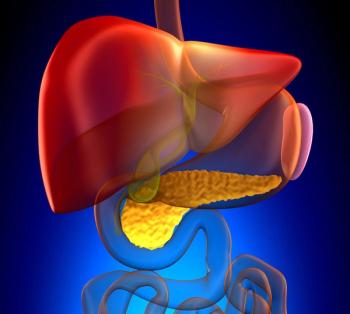
CT Colonography Best CRC Screening Alternative to FOBT, Colonoscopy?
The use of a reduced preparation CT colonography increased participation in colonography as a method of population screening for colorectal cancer, according to the results of a large Italian study.
The use of a reduced preparation CT colonography (r-CTC) increased participation in colonography as a method of population screening for colorectal cancer, according to the results of a large Italian study published in the Journal of the National Cancer Institute. However, the study also showed that fecal immunochemical test (FIT) was still the most widely used testing method.
“The SAVE trial is the first [randomized controlled trial] comparing CTC with FIT as the primary test for population screening of colorectal cancer,” wrote researcher Lapo Sali, MD, PhD, of the University of Florence, and colleagues. “Participation rate was higher for first-round FIT than for CTC, but CTC detected more cancers and advanced adenomas both per participant and per invitee.”
According to background information in the study, FIT is the most widely used screening method in Europe-with participation rates of between 48% and 63%-but the method often needs to be repeated every 1 to 2 years and has low sensitivity for large adenomas. In contrast, optical colonoscopy (OC), the most complete screening method for colorectal cancer, has the lowest participation rates.
The researchers invited 16,087 citizens of Florence, Italy, aged 54 to 65 to participate in the study and randomly allocated them at a ratio of 8:2.5:2.5:1 to one of four colorectal cancer screening interventions: biennial FIT for three rounds, r-CTC, full cathartic preparation CT colonography (f-CTC), or OC. The primary outcome was participation in screening.
Participation rates were highest for patients assigned to FIT (50.4%) compared with r-CTC (28.1%), f-CTC (25.2%), and OC (14.8%), with statistically significant differences in the rates for comparisons between all groups. According to the researchers, the rate of FIT in this study was similar to the average seen in Italian screening programs.
“Beside subjects expectations about the examinations, study participation in CTC and OC may have been negatively affected by the different recruitment procedures adopted with respect to FIT,” the researchers wrote. “In particular, invitees of CTC and OC groups were requested to undergo a face-to-face consultation before examination, whereas FIT invitees had only to collect the test in the nearest pharmacy.”
As expected, detection rates were highest among patients who underwent screening with OC (7.2%) compared with 1.7% for FIT, 5.5% for r-CTC, and 4.9% for f-CTC.
Despite lower participation, the “detection rate per invitee of CTC was 50% higher than that of FIT,” Sali and colleagues wrote. “This difference was because of an approximately fivefold increase in the CTC detection rate of advanced adenomas smaller than 10 mm, for which the very low sensitivity of FIT is well known.”
“The combination of lower attendance and higher detection rate of screening CTC as compared with FIT are key factors for the optimization of its role in population screening of CRC,” the researchers concluded.
In an editorial that accompanied the article, Ernst J. Kuipers, MD, PhD, and Manon C. W. Spaander, MD, PhD, of Erasmus University Medical Center, wrote that the differences in the types of screening for colorectal cancer make it so that there is no test or program design that makes one type of screening better than the other, but feel that follow-up to these types of screenings are essential, and therefore, find that the study is useful to identifying and combatting the disease.
“The authors conclude that limitation of the bowel preparation increases the participation in CTC,” they wrote. “This is an important new finding that is in line with previous observations that ease is an important determinant of screening uptake.”
Newsletter
Stay up to date on recent advances in the multidisciplinary approach to cancer.


















































































